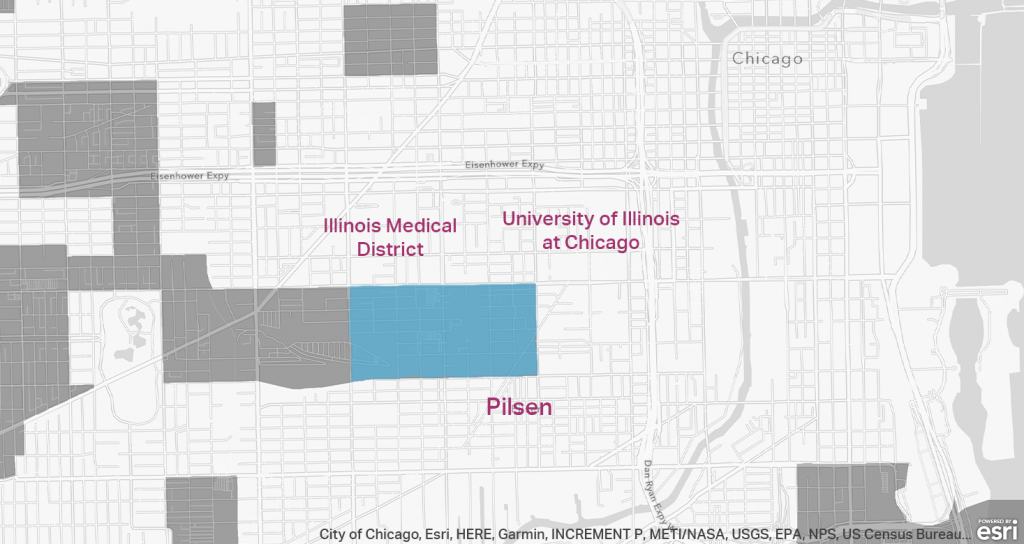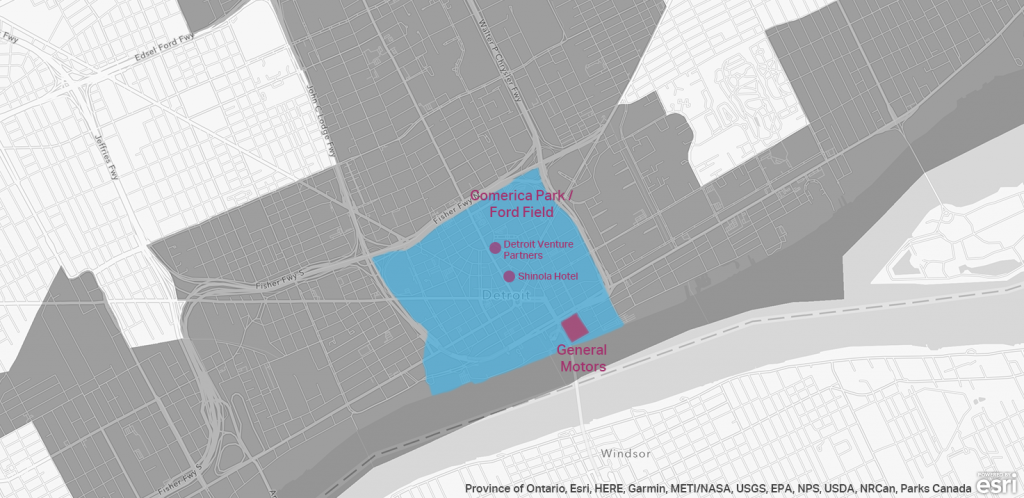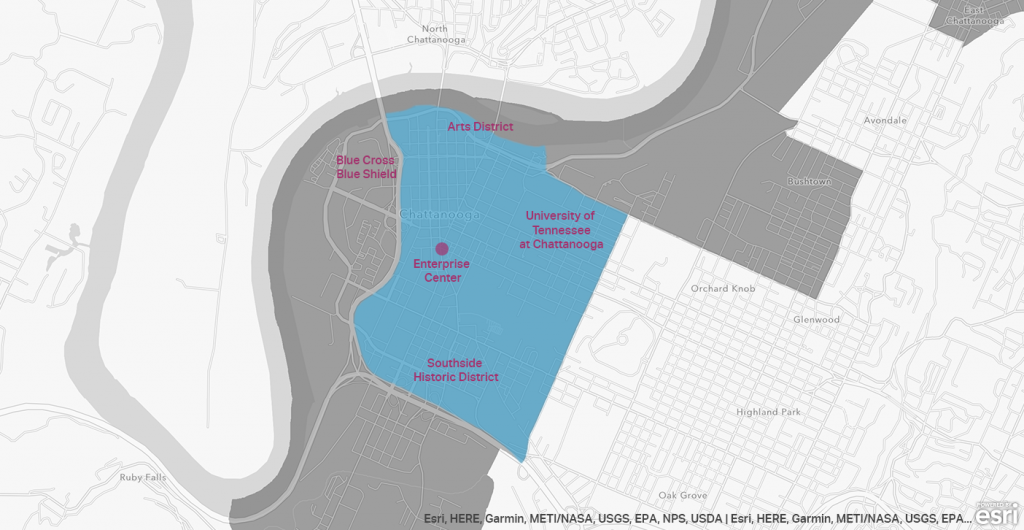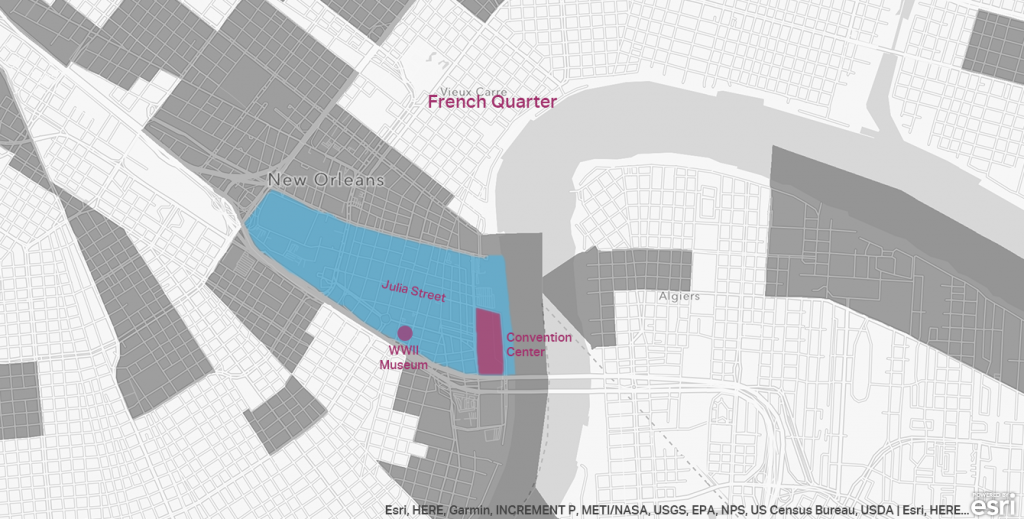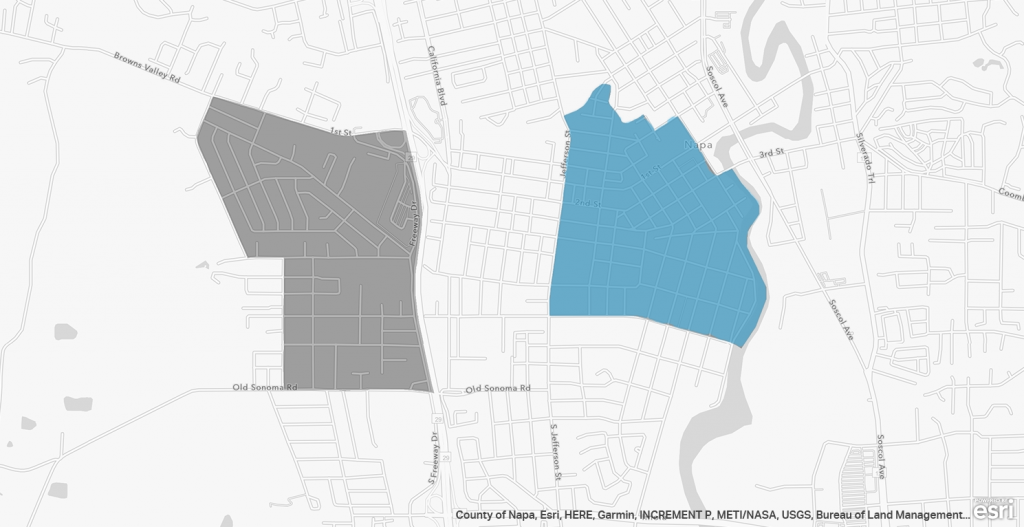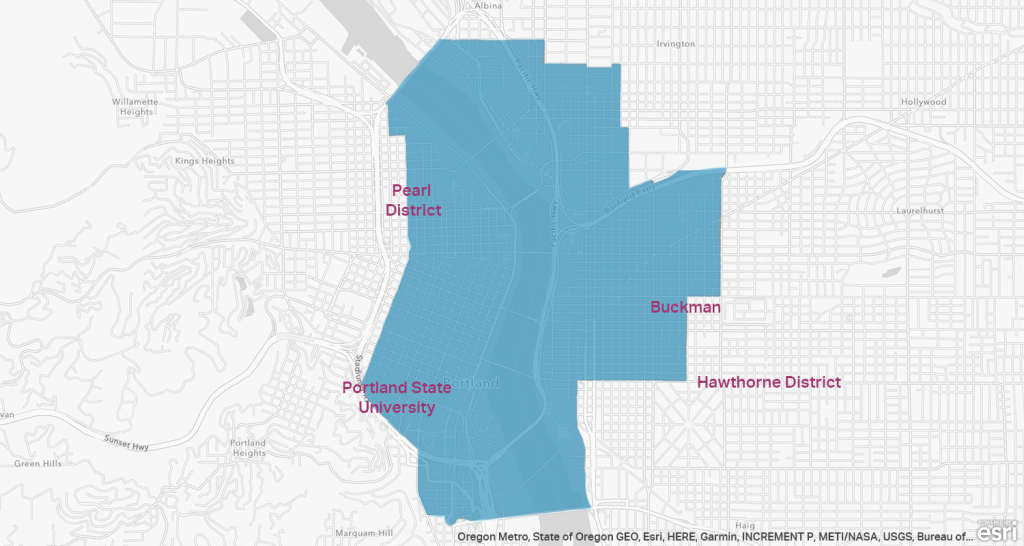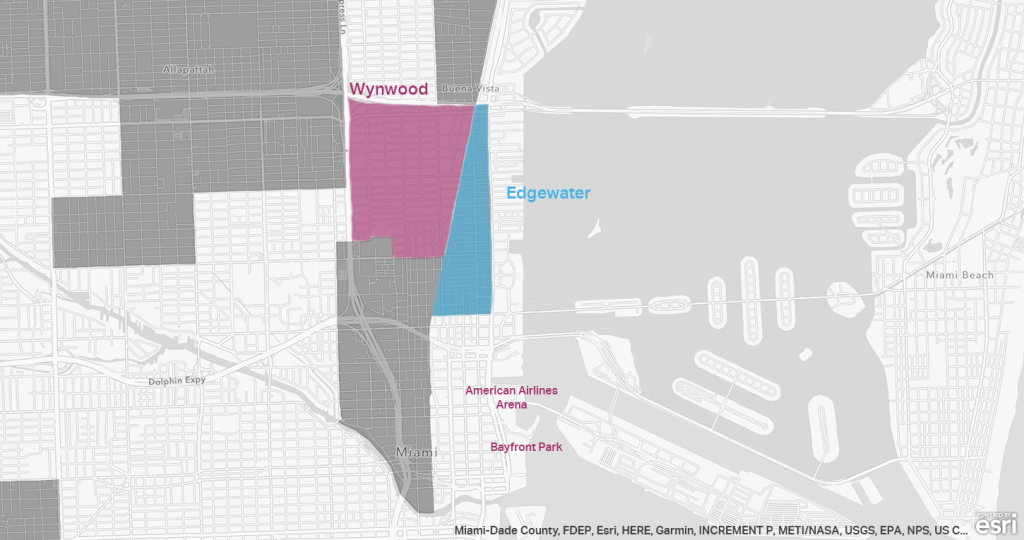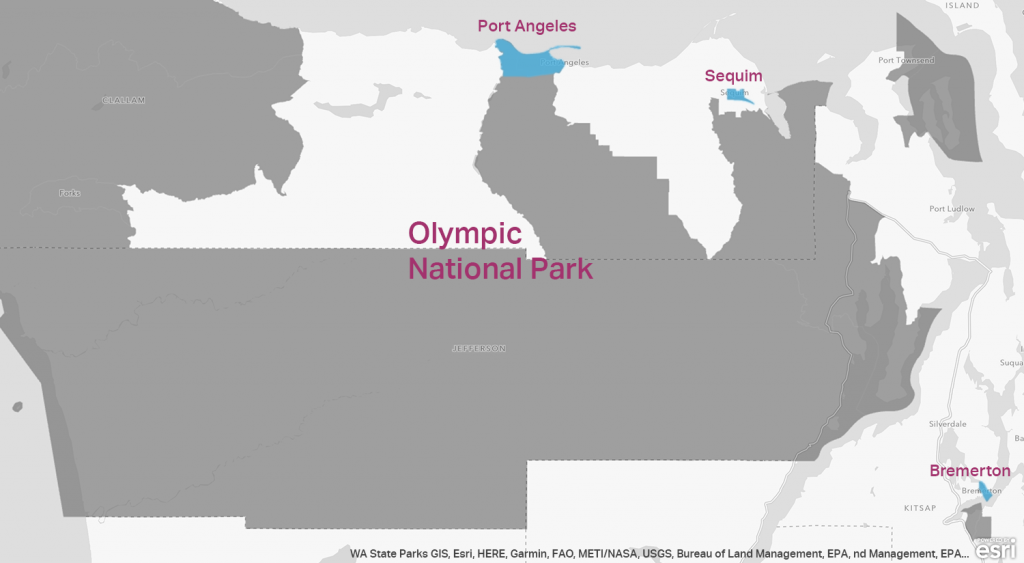With over 8,700 Opportunity Zones across the U.S, navigating and prioritizing zones can be difficult. This article highlights 11 zones (with maps) with interesting context — from billionaire ownership to nearby employers to new real estate projects.
Opportunity Zones are an active topic among investors and legislators, with ample reporting on their tax advantages and regulations. But relatively little has been written about individual Opportunity Zones. Yet there are over 8,700 Opportunity Zones across the United States. In California alone, there are 879 Opportunity Zones, representing 10% of all designated tracts. Navigating all these zones can be an incredible challenge.
A Little Background
At a high level, Opportunity Zones (OZs) offer a variety of tax incentives to investors who roll their capital gains into ‘qualified investments.’ Qualified investments can include substantial real estate improvements, new buildings, and a broad range of business investments (including tech companies). Perhaps one of the biggest incentives is that any future gains on qualified investments can be tax free. The intention of the legislation is to fuel long-term economic growth and job creation in underdeveloped and economically distressed areas of the U.S.
All of the opportunity zones were required to meet a certain set of economic qualifications at their time of designation. Please bear in mind that these zones come with ample risk: many have significant levels of poverty and/or have been left behind for decades. For further assessment, you may read our CIO’s article that explores the OZ regulations in-depth.
The Power of Context
While there have been some reports and articles highlighting specific zones, pure numeric analysis doesn’t account for contextual nuances.
Context matters. For example, one zone may already be largely owned by a single investor or a small roster of developers. Another zone may be adjacent (or encompass) a top tier university. Some zones might already be hip and trending. While other zones may be industrial wastelands, lack power or infrastructure, or face a multitude of sizable challenges.
In the long run, the success and failure of different opportunity zones may vary widely. Some may meet and exceed the revitalization intention of the legislation. But others might never see a single dollar of investment result from the OZ legislation.
Whether you’re a family office that wants a diversified set of different opportunity zones, a growth or value investor targeting OZs with specific potential, or an impact investor striving for societal change — it may help to understand and visualize the context around prospective opportunity zones.
This article highlights several opportunity zones that we think have interesting context. Note that some of the below areas encompass multiple zones or census tracts, while others focus on a subset of a single tract. For each discussed area, we’ve included a map to help illustrate context. Unless otherwise noted, the highlighted Opportunity Zone(s) are blue, other OZs are dark grey, and key context is magenta.
Here’s the list of Opportunity Zones we explore in this article:
- Baltimore, MD: Port Covington
- Chicago, IL: Little Italy / Pilsen
- Detroit, MI: Downtown
- Chattanooga, TN: Downtown
- New Orleans, LA: Warehouse District
- Napa, CA: Downtown
- Providence, RI: Downtown
- Portland, OR: Downtown / Central City / Central Eastside
- Miami, FL: Edgewater
- Washington State: Olympic Peninsula
- Los Angeles, CA: Baldwin Hills / Culver City
Baltimore, MD: Port Covington
Directly adjacent to Under Armour’s Headquarters and the new Sagamore Spirits Distillery is an opportunity zone encompassing much of Port Covington — an old railroad terminal. Despite being quite rundown / industrial, Under Armour founder Kevin Planck happens to own 40% of this zone. Port Covington is also quite close to neighborhoods that have seen extensive growth and gentrification over the last decade — Locust Point / Fort McHenry and Federal Hill. While those neighborhoods are separated from Port Covington by I-95, they are home to a range of coffee shops, restaurants, juice bars, gyms, and even a Ritz Carlton Residence. The zone also happens to be home to popular seafood destination Nick’s Fish House and startup coworking space Betamore.
Chicago, IL: Little Italy / Pilsen
This zone is sandwiched between the University of Illinois at Chicago to the northeast, the Illinois Medical District to the north, and the burgeoning historically Latino neighborhood of Pilsen to the south. That positioning brings a large base of nearby medical jobs as well as cultural influence (and jobs) from the university. And while to reach Pilsen one must cross beneath train tracks on select thoroughfares, Forbes recently named the neighborhood one of the ‘12 coolest in the world’. The opportunity-zoned area is quasi-Little Italy, dominated by light residential and ‘bad Italian restaurants’ as described by one local Chicagoan. It also hosts the closest Costco to downtown and the loop.
Detroit, MI: Downtown
All of downtown Detroit is zoned. Perhaps unsurprisingly, a lot of Detroit is zoned, but downtown Detroit may be of particular interest. Quicken Loans founder Dan Gilbert owns a lot of downtown Detroit. Also in downtown are General Motors headquarters, Ford Field and Comerica Park, and a range of hip new restaurants, breweries, cocktail bars, and businesses. The area is also home to the new Shinola Hotel (the first hotel started by the local luxury goods brand) as well as a swathe of startup companies, the Detroit Techstars accelerator, VC funds like Detroit Venture Partners, coworking hubs such as WeWork, SpaceLab, Bamboo, and coding academy Grand Circus.
Google’s CFO recently visited Detroit for the first time and offered this assessment: “Seeing the amount of construction, with the big building that is going up, to the new Shinola Hotel and the energy there, I think it’s consistent with our view that we should be here.”
Chattanooga, TN: Downtown
Speaking of downtowns — like Detroit — all of downtown Chattanooga is zoned. Chattanooga may not be on many radars, but it’s an intriguing city that’s seen growth and development over the last decade. Given its outstanding access to the outdoors as well as its growing tech community, Chattanooga is evocative of Boulder, CO. Overhanging the Tennessee River is the Hunter Arts Museum, the Tennessee Aquarium, and a robust arts district. Being the first city with its own citywide gigabit internet network (2010) has helped it attract and retain tech talent, startup companies, and incubators like the Enterprise Center. Chattanooga is also home to several billionaire families who have invested heavily in their community. All this, with housing costs below the national median: Chattanooga comes in at $174k versus a national median of $235k.
New Orleans, LA: Warehouse District
While much can be said about New Orleans’ needs around urban revitalization, the city has seen steady growth and development with “new restaurants, pop-ups, coffee shops, bakeries, cocktail lounges, food halls, and delis opening at a dizzying pace”, earning it the New York Times’ No. 1 destination and Southern Living’s ‘Best Southern Food City’ in 2018. Though a sizable portion of the city is zoned, the Warehouse District may warrant closer examination.
The district — which sits fully in an opportunity zone — is a rather brief walk to the historic French Quarter. It hosts the city’s World War II Museum, the renowned pork restaurant Cochon (among others), a spate of art galleries along Julia Street, and is experiencing a wave of warehouse remodeling fueling a surge in condos. The district is directly adjacent to the city’s convention center and accompanying hotels (all of which are also part of the opportunity zone), with New Orleans being home to many conferences and festivals including JazzFest, Voodoo Festival, and Inno Conference.
Napa, CA: Downtown
You might be surprised to hear the words ‘Opportunity Zone’ and ‘Napa,’ but there are indeed designated zones in both Napa and Sonoma Counties. This is in large part due to high income inequality and limited affordable housing. Despite tourists spending “close to $2 billion in Napa County [in 2016] — the people who serve those tourists often have a hard time keeping a roof over their heads.” Some hope that the zones in the region will spur the construction of higher density residential buildings.
Downtown Napa is a potentially interesting zone, which follows the riverwalk on its east side and is dotted by trendy restaurants and boutiques. Hotels and B&Bs are scattered across the zone as well, including 4-star hotels like the Andaz and historic mansions such as Churchill Manor and the White House.
Providence, RI: Downtown
The Governor of Rhode Island is a former venture capitalist who has recruited dozens of STEM-related companies to the state (and city of Providence) during her term, with the goal of creating many new ‘21st century jobs.’ She was recently re-elected for 4 more years and intends to continue on this path, which includes laying a strong educational foundation to help create long-term talent for local companies.
Looking at downtown Providence, numerous science and tech companies dot the area — including GE Digital, Deepwater Wind, Textron, Virgin Pulse, Mojo Tech, Johnson and Johnson, and the Cambridge Innovation Center. The downtown is entirely within an opportunity zone and just across the river from Brown University.
Portland, OR: Downtown / Central City / Central Eastside
The dream of the 90s may in fact be alive in Portland. Home to 77 craft beer breweries, the highest percentage of bike commuters for a large U.S. city, many art galleries and boutique stores, and commonly considered one of the top food cities in the country, the city has a distinct reputation for its quality of life. One of Portland’s opportunity zones is centered around the downtown, Pearl District, and adjacent SE hip neighborhoods of Buckman and Hawthorne Boulevard. The city has laid out a 2035 Vision for the ‘Central Eastside,’ intending to transform it into a regional riverfront destination with high employment density. A consortium of businesses and universities — including zone-based Autodesk and Portland State University — have come together to brand the area around the opportunity zone as the “Portland Innovation Quadrant.”
Miami, FL: Edgewater
Edgewater is both hailed (and criticized) as a neighborhood that was garnering investment before being designated as an opportunity zone, with multiple developers on the ground and underway. Edgewater is sandwiched between the waters of Biscayne Bay and Wynwood — a surging arts district with hundreds of street murals, art galleries, and restaurants. The opportunity zone is home to Bentley, Bugatti, and Ferrari dealerships, and is near the American Airlines Arena, Bayfront Park, and multiple routes to Miami Beach. That, paired with the broader context of Miami’s growing role as a financial and operational center for Latin America, may pique interest.
Washington State: Olympic Peninsula
The Olympic Peninsula isn’t known for a robust economy, but rather its majestic landscapes and Olympic National Park — one of the top 10 most visited national parks in the country. To help further the peninsula’s multi-decade transition from a timber-driven to tourism-driven economy, large swathes of the peninsula have been designated as opportunity zones.
The partially OZ-designated town of Port Angeles, on the northern center of the Peninsula, hosts the Victoria, BC ferry and is in the Olympic rain shadow (offering more sun than Seattle). Parts of nearby sun-filled Sequim are designated. And a small area of Bremerton — directly adjacent to the Seattle ferry with its nearly 3 million annual riders — is also an opportunity zone.
While the peninsula isn’t without its challenges (including limited roads and up to 12 feet of annual rainfall in certain parts), its unique beauty and outdoor opportunities may resonate with particular investors, businesses, and developers.
Los Angeles, CA: Baldwin Hills / Culver City
Both HBO and Apple’s entertainment division are relocating to a real estate megaproject that abuts this opportunity zone and straddles the Expo light rail line. Simultaneously, Amazon Studios is taking over and expanding on the nearby historic Culver Studios campus — where classic films including Gone with the Wind and Citizen Kane were filmed. The business area of Hayden Tract is even closer — home to companies and startups such as Beats Electronics, Maker Studios, Scopely, Steelhouse and a range of creative agencies and studios. Not to mention the bLAckwelder Creative Campus.
And just to the south of this opportunity zone are the famous Culver City Stairs — a popular ‘outdoor stairmaster’ hike resulting in 360° views around LA. Of course, located within the opportunity zone is the build-site for a 17-story creative high-rise tower called the ‘(W)rapper Tower’, a 30-story 1200 unit apartment complex called ‘Cumulus’, a 50,000 square foot building leased to Nike, and more. All this plus the La Cienega / Jefferson metro station make for an interesting opportunity zone.


